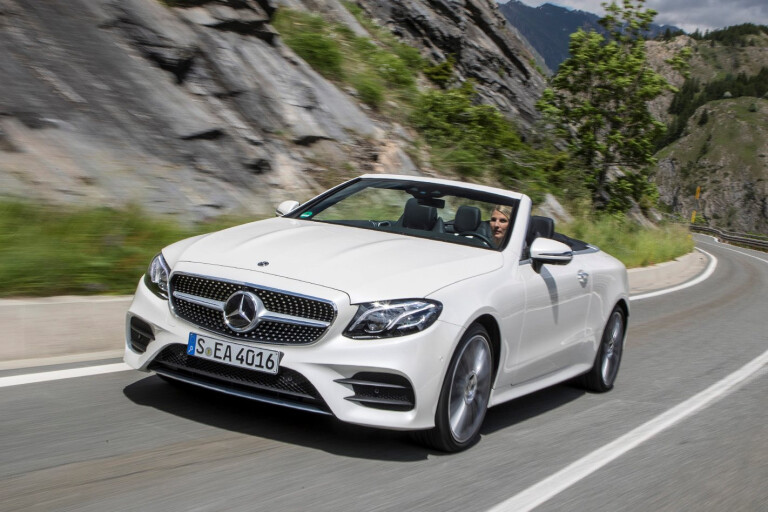
OUR first taste of the new Mercedes-Benz E-Class drop-top shows Benz's big convertible is back on a path to greatness
WHAT IS IT?
The fifth model in Mercedes-Benz’s ever-growing E-Class family, and the first E-Class Convertible in a long while to be an all-E-Class offering right to its very core.
WHY WE'RE TESTING IT
The old E-Class Cabrio was a lukewarm offering that was hobbled by its C-Class underpinnings, leaving it with a cramped interior and cabin design that was at odds with the E-Class sedan of the day. This all-new E-Cabrio rights all of those wrongs.
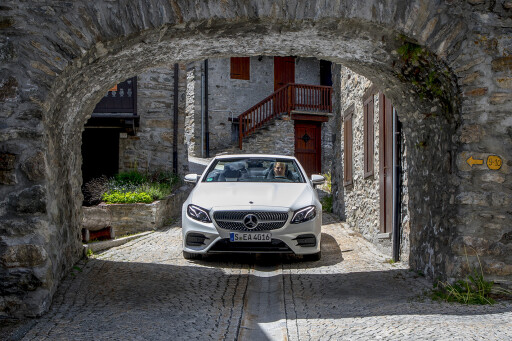 MAIN RIVALS
MAIN RIVALS
BMW 6 Series Convertible
THE WHEELS VERDICT
The new E-Class Cabriolet is leaps and bounds ahead of its heavily compromised predecessor, and is an exceptional grand-tourer. After all, it’s much easier to see the sights when you don’t have a roof in the way.
PLUS: No scuttle shake; lots of passenger space; uncompromised drive; strong V6 turbo
MINUS: E300 isn’t as effortless as V6; dorky Aircap system; upright rear backrests
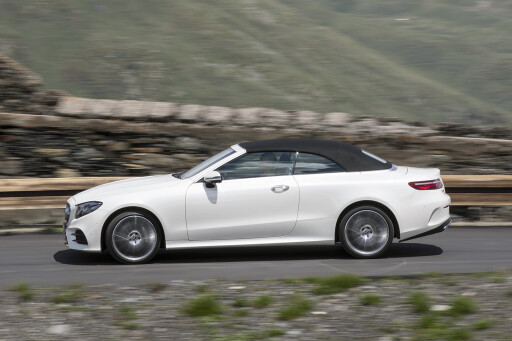 THE WHEELS REVIEW
THE WHEELS REVIEW
THE junction of the French, Italian and Swiss borders makes a great place to launch a luxury convertible, what with the abundance of superb roads and jaw-dropping Alpine scenery. Natural, then, that Benz would select it as the venue for its 2018 E-Class Cabrio drive.
Less intuitive was Mercedes-Benz’s stunt of helicoptering their new drop-top to an observation deck atop Mont Blanc, the tallest peak in Western Europe. A not-so-subtle metaphor about “reaching new heights”? Marketing-speak can be cringe-worthy, but this time around such a claim would at least be accurate.
 The E-Class Cabriolet was a fairly ho-hum thing in its last generation (mainly because it was based on the C-Class and was an E-Class in name only), but its replacement, now built on the E-Class version of Benz's scalable MRA platform, lifts itself high onto a fairly lofty pedestal. No helicopter required.
The E-Class Cabriolet was a fairly ho-hum thing in its last generation (mainly because it was based on the C-Class and was an E-Class in name only), but its replacement, now built on the E-Class version of Benz's scalable MRA platform, lifts itself high onto a fairly lofty pedestal. No helicopter required.
As far as four-seat convertibles go, it's one of the best.
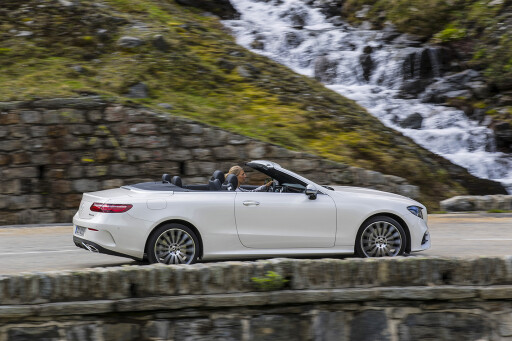 Big call, but consider how the large luxo drop-top segment is already fairly sparsely populated. The BMW 6 Series Convertible is on its last legs, and while Audi's new A5 convertible has grown, it's still a size category below the E-Class Cabrio. Jaguar has no E-segment convertible equivalent, and neither does Lexus, Infiniti or Volvo.
Big call, but consider how the large luxo drop-top segment is already fairly sparsely populated. The BMW 6 Series Convertible is on its last legs, and while Audi's new A5 convertible has grown, it's still a size category below the E-Class Cabrio. Jaguar has no E-segment convertible equivalent, and neither does Lexus, Infiniti or Volvo.
So Mercedes wins by default, but that's not to say it doesn't deserve the crown. After all, the A238 E-Class Cabriolet compromises very little as a result of its roof-ectomy. Rear seat space is huge thanks to a 113mm wheelbase stretch relative to the outgoing Cabrio (overall length swells by 123mm), while overall width grows by 74mm. That nets 102mm more rear legroom and 14mm more rear shoulder room – perfect for the wealthy two-kid families that Benz envisions being among the typical E-Class Cab buyer.
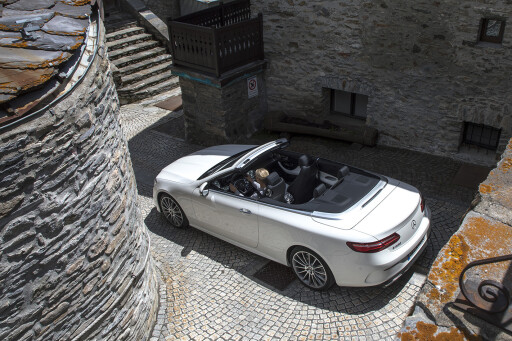 Even adults won't struggle to fit in the back. Convertibles that can comfortably seat four fully-growns are thin on the ground, but the E-Class Cabriolet is among of them. Back seat comfort is further enhanced by tri-zone climate control with independent temperature controls and a pair of vents on the rear of the centre console, plus the availability of rear seat heaters.
Even adults won't struggle to fit in the back. Convertibles that can comfortably seat four fully-growns are thin on the ground, but the E-Class Cabriolet is among of them. Back seat comfort is further enhanced by tri-zone climate control with independent temperature controls and a pair of vents on the rear of the centre console, plus the availability of rear seat heaters.
The rear backrests are quite upright and adults taller than 5'10” may brush against the headlining, but these are the sum total of our complaints about the rear seats. Looking for a convertible that can carry? Here it is.
A smaller gripe is Benz’s Aircap system – a complex windblocker arrangement that pairs a power-retractable spoiler above the windshield with a more conventional screen behind the rear seats. It’s highly effective, enabling easy speech and hairdo-friendly airflow with the roof down, windows up and Aircap deployed, but it looks tremendously dorky with everything extended and spoils the otherwise graceful form of the Cabrio.
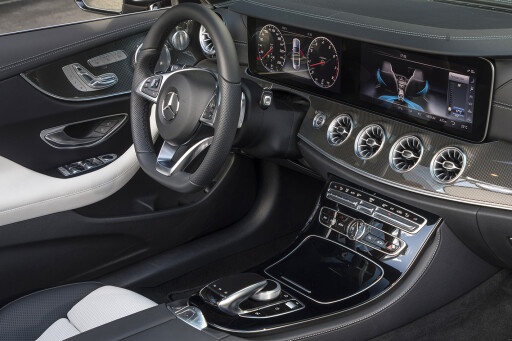 But really, there's little else to whine about. The interior is a near-facsimile of the E-Class coupe's which in turn is a two-door version of the E-Class sedan, and there's a luxurious aura around everything from the jet turbine-inspired air vents to the twin-screen instrument panel. The leather upholstery is even treated to reflect infrared light, which helps keep the seats cooler when parked in strong sun. No more scorched thighs in summer.
But really, there's little else to whine about. The interior is a near-facsimile of the E-Class coupe's which in turn is a two-door version of the E-Class sedan, and there's a luxurious aura around everything from the jet turbine-inspired air vents to the twin-screen instrument panel. The leather upholstery is even treated to reflect infrared light, which helps keep the seats cooler when parked in strong sun. No more scorched thighs in summer.
And the folding multi-layered fabric roof is fantastic. Powering up or down in just 20 seconds at speeds up to 50km/h, it tucks neatly into the boot (cutting 75 litres from the 385 litre overall capacity) and, when raised, insulates the cabin from wind and traffic noise.
However the E-Class Cabrio's most laudable trait is just how solid it feels. Scuttle shake is the enemy of convertibles, but Benz's engineers seem to have vanquished it. Roof down, there's barely any structural shimmy at all.
 Benz credits this to a reinforcing frame that ties the rear suspension, rollover hoop and soft-top into the chassis, and it confers a level of rigidity that’s hard to find in the roofless realm. Handling, refinement and comfort all benefit as a result.
Benz credits this to a reinforcing frame that ties the rear suspension, rollover hoop and soft-top into the chassis, and it confers a level of rigidity that’s hard to find in the roofless realm. Handling, refinement and comfort all benefit as a result.
That rigid chassis is matched by supporting hardware that’s just as good: steering with a fluid feel and natural weighting that, in Comfort mode, matches the effortless nature of the E400's chassis and powertrain perfectly, coupled with multi-link suspension front and rear which delivers exceptional ride quality if you option in air springs.
 Both the E400 and E300 we drove at launch were apparently equipped with air suspension, but the E300’s slightly brittle ride felt like it was on conventional coils. The E400, meanwhile, glided serenely over bumps and definitely sported an air-sprung feel, though we won’t discount the possibility that the considerable 155kg weight difference between the two grades may have had something to do with the ride discrepancy.
Both the E400 and E300 we drove at launch were apparently equipped with air suspension, but the E300’s slightly brittle ride felt like it was on conventional coils. The E400, meanwhile, glided serenely over bumps and definitely sported an air-sprung feel, though we won’t discount the possibility that the considerable 155kg weight difference between the two grades may have had something to do with the ride discrepancy.
And speaking of the differences between powertrains, it’s the E400’s 245kW/480Nm twin-turbo 3.0-litre V6 that’s better suited to the E-Class Cabrio’s nature as a relaxed, comfortable grand-tourer. Bursting with low-end torque and a powerful midrange, it makes light work of motivating the 1935kg E400 and barely sweats up steep alpine roads. Meanwhile the E300’s turbo 2.0-litre four-pot supplies a decent 180kW/370Nm output, but needs plenty of revs on the dial to get moving smartly.
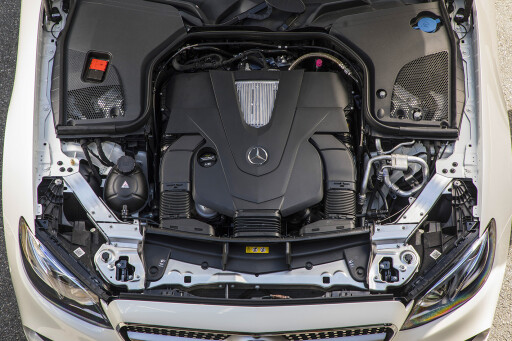 The E400 may be a heavy beast, but that’s largely down to it receiving all-wheel drive rather than a rear-drive layout – and a great deal more grip in slippery conditions. Both models come standard with Benz’s excellent nine-speed auto.
The E400 may be a heavy beast, but that’s largely down to it receiving all-wheel drive rather than a rear-drive layout – and a great deal more grip in slippery conditions. Both models come standard with Benz’s excellent nine-speed auto.
Like the E-Class Coupe, E200, E220d and E350d variants are available overseas but won’t be coming to Australia. For us, the E300, E400 and the eventual Mercedes-AMG E53 will be the only powertrain options for the E-Class Cabriolet.
The E-Class Cabriolet will begin arriving in Australia in September, with pricing and local specifications to be confirmed soon.
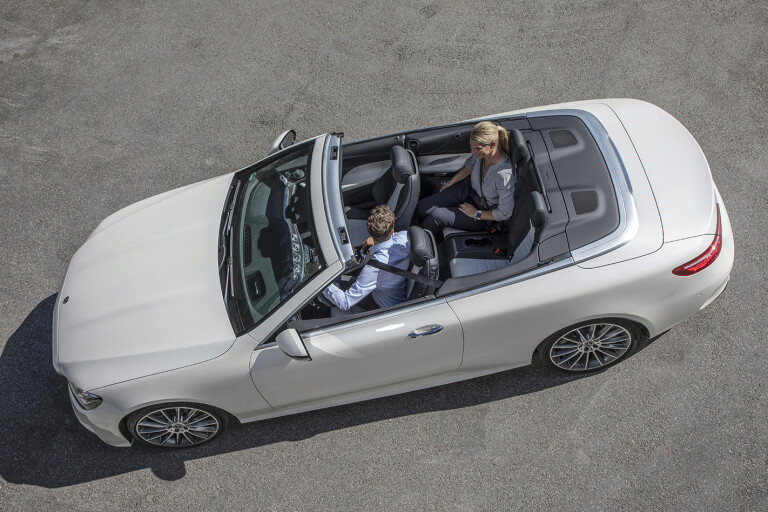
Model: Mercedes-Benz E400 Cabriolet
Engine: 2996cc 6cyl, dohc, 24v, turbo
Max power: 245kW @ 5250-6000rpm
Max torque: 480NM @1600-4000rpm
Transmission: 9-speed automatic
Weight: 1936kg
0-100km/h: 5.5sec (claimed)
Economy: 8.6L/100km (claimed)
Price: TBA
On sale: September

COMMENTS